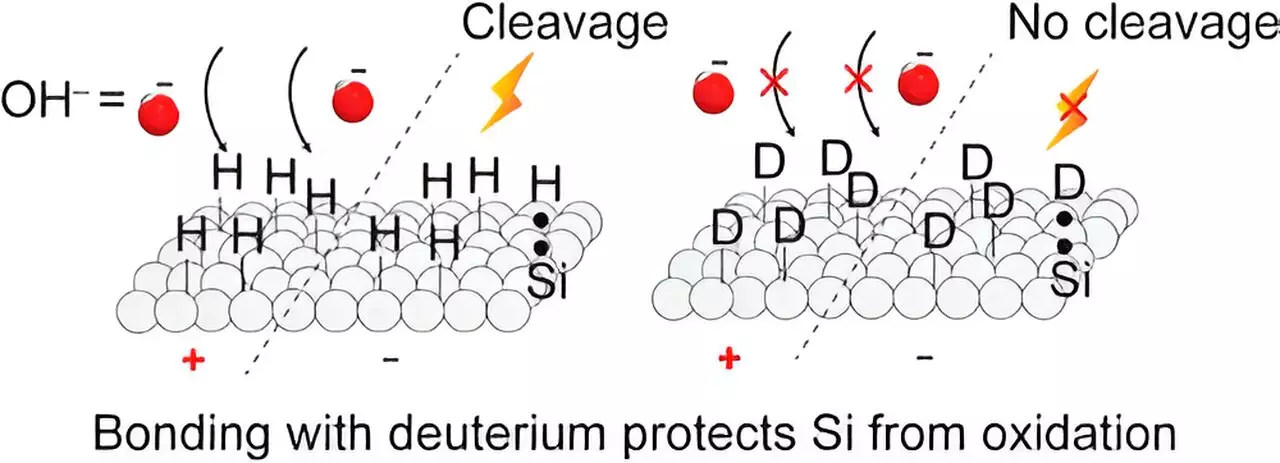In a rare collaboration, two brothers who are scientists from unrelated disciplines have joined forces to tackle a chemical problem related to the use of silicon in electronic devices. Dr. Tamim Darwish, leader of the National Deuteration Facility (NDF), suggested to his brother, Dr. Nadim Darwish, a Senior Lecturer in molecular electronics at Curtin University, that deuterating silicon might improve its properties. This partnership between experts in deuteration and molecular electronics brings together complementary expertise to explore new possibilities for silicon-based technologies.
Silicon, combined with organic molecules, has emerged as a promising technology for various applications such as sensors, solar cells, power generation, and molecular electronic devices. However, the utilization of silicon surfaces combined with hydrogen (Si-H surfaces) in these devices has been challenging due to their susceptibility to oxidation. Oxidation can degrade the stability and performance of these devices both mechanically and electronically, limiting their potential.
The Power of Deuterium
Drawing upon the unique properties of deuterium, an isotope of hydrogen, the Darwish brothers and their team set out to investigate the impact of replacing hydrogen with deuterium on silicon surfaces. Deuterium, with its additional neutron, offers enhanced stability and isotopic effects. The National Deuteration Facility (NDF), a world leader in deuteration research, specializes in providing bespoke deuterated molecules and labeling techniques, making it an ideal platform for this study.
The results of their research, published in ACS Applied Materials & Interfaces, demonstrate that replacing hydrogen with deuterium on silicon surfaces (Si-D surfaces) significantly improves their resistance to oxidation when exposed to positive or negative voltages. Si-D surfaces exhibit greater stability against oxidation, ensuring the longevity and performance of silicon-based devices. Furthermore, the electrical characteristics of Si-D surfaces remain more consistent compared to Si-H surfaces, offering reproducibility and reliability.
Implications for Applications
The findings of this study have profound implications for a wide range of applications that require non-oxidized silicon surfaces. Electrochemical biosensors, silicon-based molecular electronic devices, and silicon-based triboelectric generators can all benefit from the use of Si-D surfaces. The increased stability and consistency of Si-D surfaces enable the development of more robust and efficient devices in these fields.
Beyond immediate applications, the significant surface isotope effects discovered in this study have far-reaching implications for the design of silicon-based devices, molecular electronics, and power generation technologies. By understanding the impact of deuterium on silicon surfaces, scientists and engineers can optimize the performance and reliability of future devices. These findings also shed light on the interpretation of charge transport characteristics in silicon-based systems, providing valuable insights for further research and development.
The collaboration between Dr. Tamim Darwish and Dr. Nadim Darwish has unlocked new possibilities in silicon-based technologies. Through the replacement of hydrogen with deuterium on silicon surfaces, the stability and consistency of these surfaces have been greatly enhanced. This breakthrough has significant implications for various applications, from biosensors to power generation devices, and has the potential to revolutionize device design and improve charge transport characteristics. As researchers continue to explore the incredible properties of deuterium and its impact on silicon, the future of silicon-based technologies looks brighter than ever.


Leave a Reply